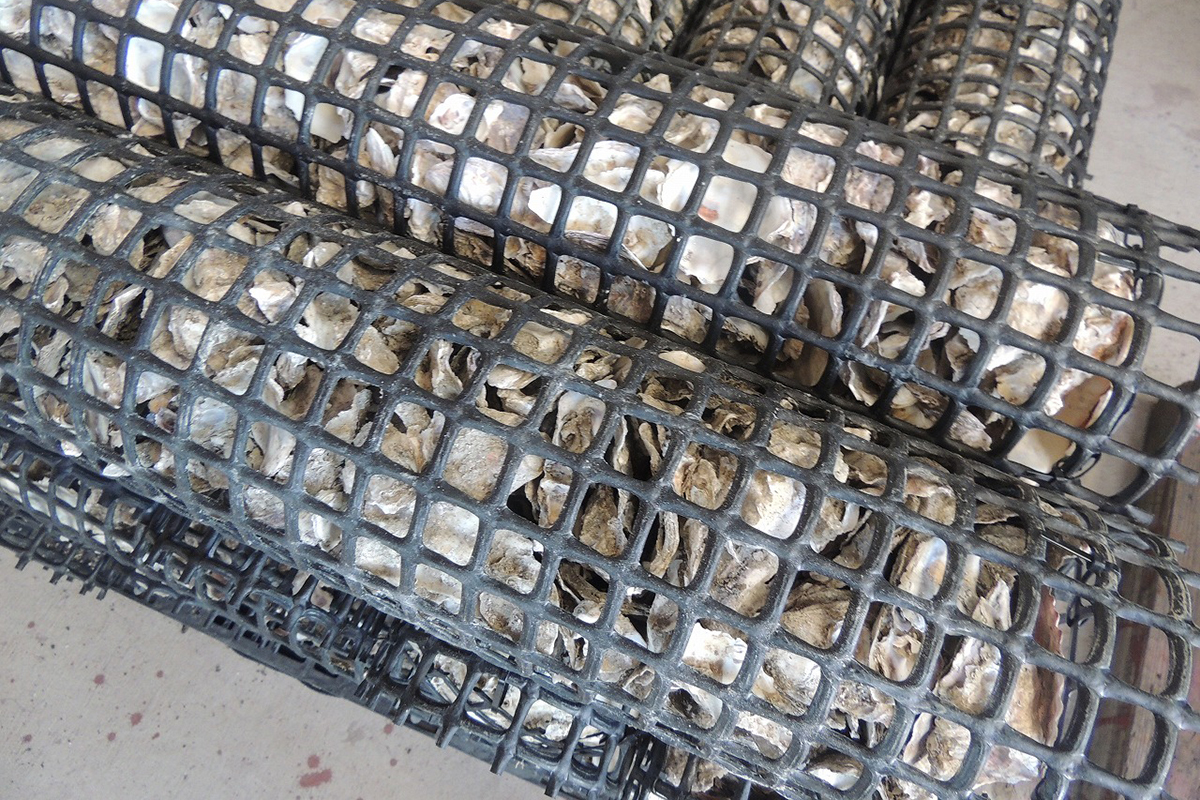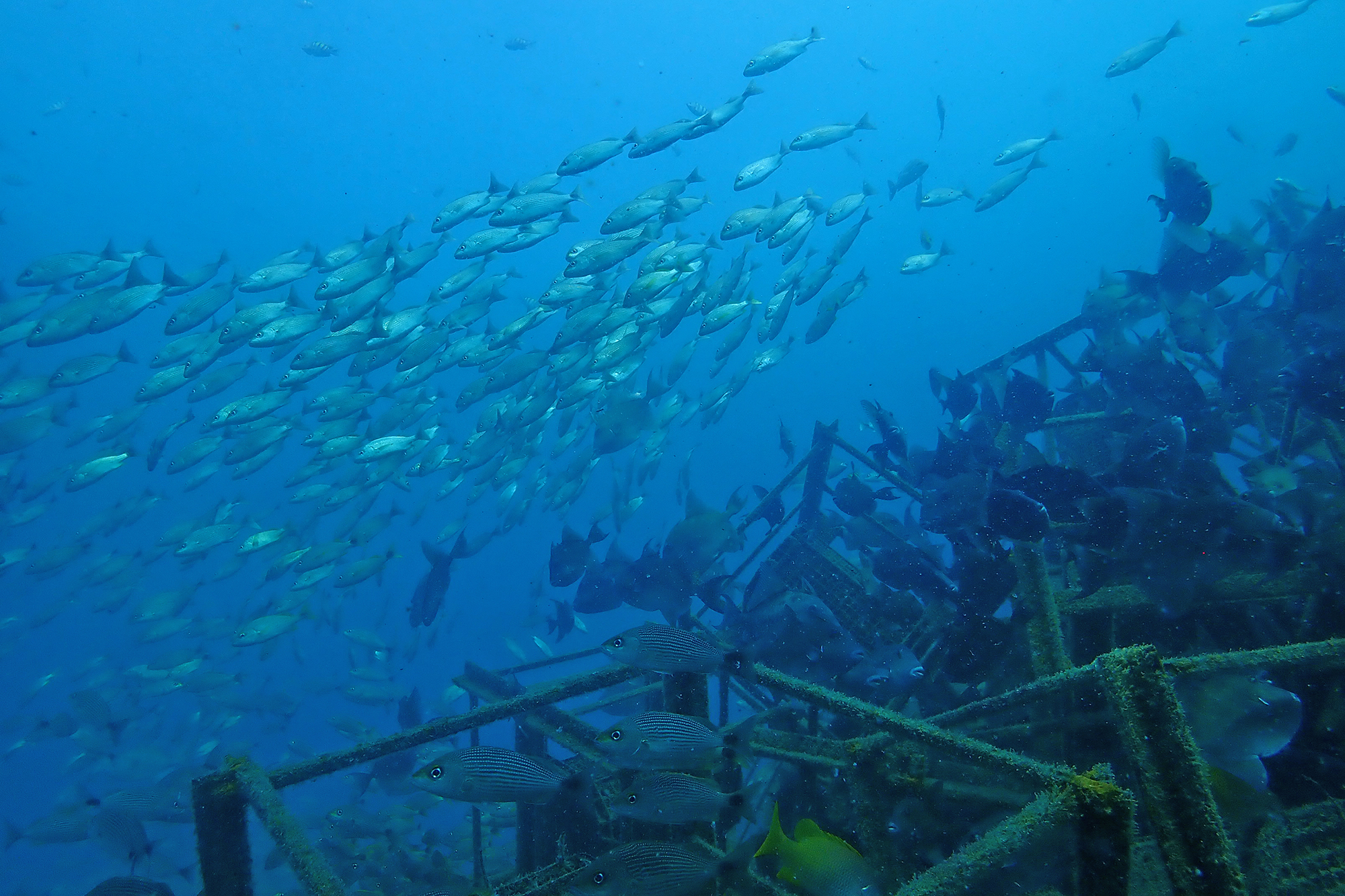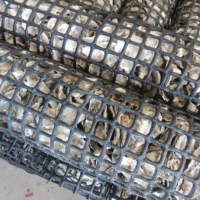Fish stocks are being depleted for multiple reasons, one of which is the destruction of fish habitats and spawning grounds. A venture company based in Okayama called Kaiyo Kensetsu — which means “ocean construction” — has been promoting innovative approaches to restoring these critical environments.
Kaiyo Kensetsu has developed a cubic structure made of steel frames filled with discarded oyster shells. This system, called Shellnurse, ranges in size from 1 to 2 meters per side, and multiple units can be combined to create a mound. It serves as both a habitat and spawning ground for fish, and also helps aggregate them. Shellnurse has already seen success in many parts of Japan.
After oysters are harvested for food, their shells are often discarded as waste. In some regions, these discarded shells are crushed and repurposed as fertilizer for farmland. However, there is a growing belief that it may be more beneficial to return the shells to the ocean, as they originate from there. Reintroducing oyster shells could allow them to dissolve and release calcium and calcium carbonate, which could help mitigate ocean acidification.
There is growing recognition of the potential of oyster shells to restore fish and shellfish habitats on the seafloor. A comparative study examined the impact of oyster shells versus turban snail shells on increasing fish and shellfish biomass. The results indicated that areas with a concentration of oyster shells supported a greater abundance of juvenile shellfish than those with turban snail shells.

Various laws regarding the protection of the marine environment prohibit the dumping of waste in coastal areas. Therefore, the installation of shell nurseries must be time-bound and should not be considered a form of waste disposal. The duration for these installations can be set for 30 years. When shell nurseries are placed in typhoon-prone areas, they may be displaced to different locations due to strong waves and tides. It is crucial to carefully select the locations for shell nursery installation to avoid areas that are susceptible to typhoons and strong tidal currents.
A variety of kinds of artificial reefs have been on the rise. Some efforts focus on utilizing steel slag products, which contain iron and calcium components that are effective in restoring seagrass habitats. Additionally, porous and permeable concrete structures are employed as artificial reefs, serving the dual purpose of acting as wave breakers and controlling coastal erosion. The type of artificial reef selected should be based on site characteristics and specific objectives.
Kaiyo Kensetsu has launched a pilot project in La Paz, on the western coast of Mexico. A key feature of this initiative is a local agreement among fishermen not to fish in areas where Shellnurse units are installed. These zones are designated as sanctuaries, and fishermen harvest only those fish that swim out of the protected areas — benefiting from the spillover effect of the Shellnurse system.
“We help nature restore its function by applying natural materials to the extent possible,” said Masaki Katayama, the president of Kaiyo Kensetsu.





